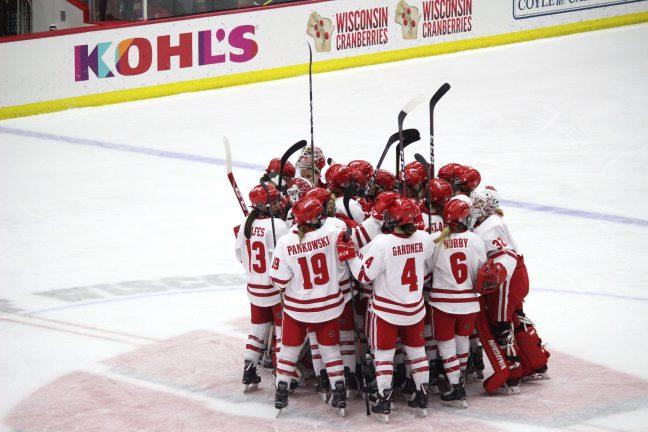The University of Wisconsin women’s hockey team is undoubtedly one of the most successful athletic programs on campus. With four national championships in the last 12 years and a chance at a fifth this year, there is no denying that the team has achieved success beyond that of other programs which receive more attention.
Despite the team’s widespread success and ripe conditions for consistent interest and student body engagement, many students are still either unaware or disinterested in the team.
Overall exposure for the team on social media is greater than that of the men’s hockey team. Over the past week, even as the teams have played an equal number of games, the women’s Twitter account has sent out a total of 60 tweets, while the men’s account has sent out only 29.
Furthermore, in terms of publishing articles, the Badger sports website is on the exact same schedule for both teams. With previews of games, analysis and recaps, the university does not play favorites when it comes to the teams they support and highlight through digital media.
But despite there being equal exposure online, community interaction is anything but.
A strong gauge of overall interest in the teams is the number of people who interact with their Twitter accounts. The men’s Twitter account has over twice the number of followers and a much higher rate of interaction when compared to the women’s page — a clear indication of divided community interest.
So, why this discrepancy between the women’s and men’s teams, given that the women’s team is more successful?
A conventional answer to this age-old question is that women’s sports are not as fast-paced or exciting.
But this dated rationale does not apply to the distinct hockey programs in Madison, as the women’s games tend to be both higher scoring and result in more wins. The women’s team has a higher average of goals scored per game and a far better record of (30-4-2) compared to the men’s record (13-16-5).
Given their high-scoring games and steady success, it’s evident that keeping up with the women’s team is a more rewarding experience than following the men’s team. But the unique pull of the women’s team does not manifest itself in attendance.
Part of this is because the women’s team plays in LaBahn Arena, as opposed to the Kohl Center — a considerably larger venue. LaBahn is regularly packed with dedicated fans for the more competitive games on the team’s schedule, but their attendance numbers pale in comparison to even an early season game at the Kohl Center.
The construction of an intimate arena for the women’s team is a sign that they have the university’s full support, even if they are not as recognized by the greater student body and Madison community as the men’s team.
Their games are higher scoring, their seasons more successful and the enjoy equal exposure from the athletic department — yet the women’s hockey team has significantly less recognition on campus.
This phenomenon is not unique to UW, as more successful women’s programs have long been underrepresented in media and received limited support.
Perhaps the best example of this is the U.S. Women’s Soccer Team. They have succeeded at the highest level of competition possible, winning multiple World Cup trophies over the past decades. Yet their salaries are less than the men’s team players’ and overall interest in the team is significantly lower.
Problems with gendered attention discrepancies within the same sport are nothing new. But this certainly does not mean that nothing more can be done on campus to shed light on what is arguably our school’s most successful sports program.
The university gives equal representation in media, and even went as far as providing the women’s hockey team their own venue to play at. It follows, then, that the main source of this lack of interest in the team lies with the student body.
When speaking with students on campus, it becomes clear that people would take an interest in the team if they were more aware of its excitement and success. To raise student awareness of the team and grow its fanbase, a general shift in the campus culture surrounding women’s hockey is necessary. Much like football is the center of fall weekends and men’s basketball games are big events Tuesday nights, women’s hockey games can become a cultural staple in Madison on winter weekends.
The obvious problem with this is that men’s hockey often competes on the same days as the women’s team, and increasing attendance at one event would decrease attendance at the other. Yet, with the difference in success and overall excitement in games, a compelling argument exists to have a more equally shared interest between the two teams.
While this may not be a realistic proposition, it remains clear that the remarkable achievements of our women’s hockey team are deserving of the student body’s full support, just as they have received the full support of the university.


